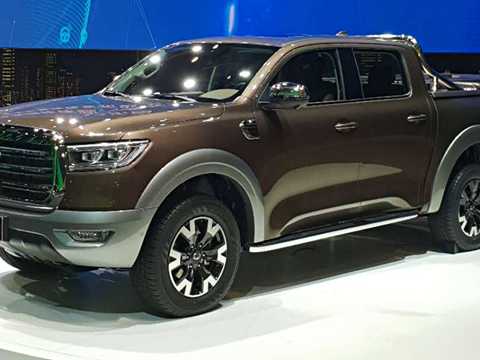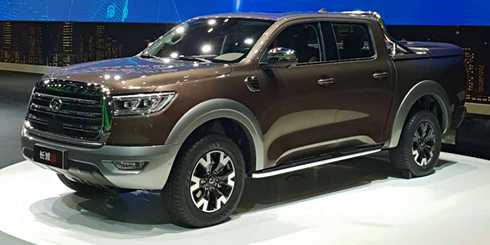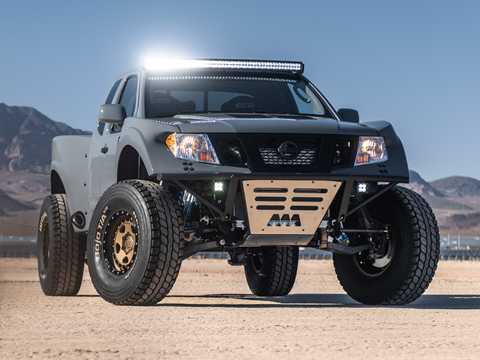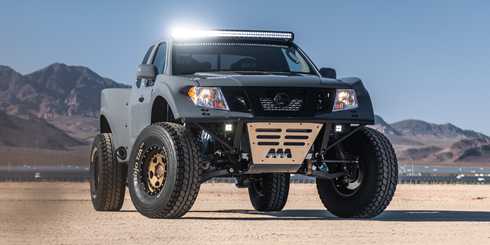How long is 4.0-million kilometres? It’s around 100 laps of the planet and that’s how many testing kilometres Isuzu engineers logged developing the latest D-Max ute range.
That’s typical of the thoroughness of this Japanese brand and underwrites why the D-Max (previous generation and the current model) has won many fans amongst ute buyers. After-all you won’t find any real utes with plastic flowers and vases on their dashboards - toughness, ability and dependability are what utes are all about whether for work or recreation.
And those sorts of reputations don’t come in five minutes and aren’t delivered instantaneously via snazzy advertising campaigns. Isuzu has been in the ute business since 1963 and has been producing commercial vehicles (both light and heavy-duty) longer than any other Japanese brand - no wonder Isuzu says its latest D-Max ute contains ‘The Spirit Of Truck’.
Isuzu D-Max Overview
At a quick count we toted-up 21 different Isuzu D-max models starting from under $30,000 and running to more than $50,000. CarShowroom.com.au tested the ‘LS-U’ grade four-door Crew Cab 4WD automatic which is stickered at $47,700.
For a bit more you can secure the ‘LS-Terrain’ grade which, amongst its extras, adds a reversing camera and satellite navigation with over 10,000 off-road destinations included.
Not that our LS-U model was short of specifications. The optional rear canopy kept our goodies secure, it rode on 17-inch alloy wheels and inside there was the usual Isuzu quality trim materials and space.
All Isuzu D-MAX utes share the same turbo-diesel engine and from there you can select five-speed manual or five-speed automatic, two-wheel-drive or four-wheel-drive. Our LS-U 4WD model, like all Isuzu D-Max utes, afforded a braked towing capacity of 3.5-tonnes – and that’s impressive by any measure and with the added knowledge that all 4x4 crew cabs are ANCAP five-star rated, you are on to a winner.
Isuzu D-Max Engine
The Isuzu D-Max isn’t lacking for pulling power that’s for sure. Power comes from Isuzu’s new three-litre, four-cylinder turbo-diesel engine code-numbered 4JJ1-TC. It features a cast alloy lower cylinder block, chain-driven dual overhead camshafts, high-pressure common-rail fuel injection and an intercooled variable geometry single turbocharger.
Our LS-U model test vehicle was fitted with the new Aisin five-speed ‘Rev-Tronic’ automatic transmission with sequential manual shifting in ‘Sports’ mode, as well as ‘Hill-Descent’ and ‘Hill-Ascent’ modes and an adaptive learning function for the control module. A five-speed manual transmission is also available.
The four-wheel-drive system is operated by a rotary dial near the gear lever (Isuzu calls it ‘Terrain Command’ 4WD). You can shift from 4H to 2WD on the move at speeds up to 100km/h.
Isuzu D-Max The Interior
There are some crew cab utes which get a tad cramped with four or more adults on-board – the Isuzu D-Max isn’t one of them. In fact the abundant interior space is one of the first things you notice when you open the doors (wider door-arches than the previous model) and climb inside.
You also notice a much more upscale choice of trim and plastic materials throughout the cabin. We’re told a more dynamic look and improved driver and passenger comfort were ‘not-negotiable’ items on the job list passed from management to the designers when the latest Isuzu D-Max was under development.
That’s also obvious with new-design seats including extra bolstering for comfort even on long trips and details like the A-pillar assist grips to aid entry/exit and when you’re in steep terrain.
Instrumentation is a nice, new design and the adjustable steering wheel (just the right thickness) combines with those new seats to provide a great driving position.
In our Crew Cab model Isuzu D-Max, entry to the rear seat was a snack thanks to those large, wide-opening doors and once inside you enjoyed a passenger car-like space and seating position.
Isuzu D-Max Exterior & Styling
We’ve always like the looks of the latest Isuzu D-Max. Unlike some rivals which have gone ‘soft’ in the looks department, Isuzu’s stylists have delivered just the right blend of contemporary style and inherent toughness demanded by ute buyers.
Those looks and the extra dimensions (which contribute to the enhanced interior space) have delivered a more dynamic and purposeful-looking on-road presence. The 4WD Crew Cab LS-U model we tested measured 5295mm in overall length (3095mm wheelbase), 1860mm in width and stood 1795mm high.
Not content with just exterior style, the designers refined the final looks of the Isuzu D-Max during extensive wind-tunnel testing at both the Japan Railway Technical Research Institute (responsible for the Shinkansen Bullet Train) and at Italian design studios of Pininfarina.
Isuzu D-Max On The Road
The latest Isuzu D-Max sits on the latest Isuzu ‘i-GRIP’ (Isuzu Gravity Response Intelligent Platform) chassis which is stiffer overall and runs improved cross bracing at the rear. In fact, despite the longer 3095mm wheelbase, extra width in the track, a smarter engine installation just behind the front wheels and that ‘i-GRIP’ means this D-Max is actually 42 per-cent more rigid than its predecessor.
Underneath is a new independent double wishbone front suspension and over-slung long-span leaf spring rear (4WD models) with Isuzu’s new ‘Flex-Ride’ suspension geometry. Development focused on traction and stability independent of the varying load conditions which are a way of life with utes.
A wet, windy wintry blast meant our Isuzu D-Max had tough conditions to contend with most days of the week it graced the CarShowroom.com.au garage. Low fog also hindered our runs over our high-speed mountain roads test loop.
Never mind, the Isuzu D-max was up to the challenge and showed the benefits of that massive test program with positive turn-in (even in sloppy conditions in a couple of corners) and good response to extra steering and throttle input mid-turn. Sure the fact we had no load out-back and the roads were cold and teeming with water meant we had to be judicious with throttle applications on corner exit (the TCS and ESC were handy allies).
Isuzu’s 3.0-litre turbo-diesel had plenty of urge at all speeds and a very satisfying exhaust ‘growl’ when you cracked the whip on it climbing hills.
Around town, the Isuzu D-Max was on par with other similar utes in terms of visibility and the 12.6-metre turning circle called for care when maneuvering in our tight CBD car park.
Isuzu D-Max issues
The reversing camera included in ‘Terrain’ models should be standard across the range. A six-speed automatic transmission would be nice.
Isuzu D-Max Verdict
We’ve rated the Isuzu D-Max very highly from day one and last year (for the launch of the D-Max-based M-UX SUV model) had the chance to visit the impressive new Isuzu plant 90-minutes outside of Bangkok, Thailand. So it was with great confidence we advised a good mate to buy a D-Max and we can report he absolutely loves it (just as well because he starts work at 6:00am six days per week and often has a one hour commute each way!).
Part of the reason is ‘purity of purpose’. There are soft utes which pretend to be passenger cars and there are brawny utes which try to be trucks, but perhaps better than most, Isuzu D-Max finds the middle ground – which is where most of the ute buyers actually are.
So, whether you’re ute is used for work or recreation, with the Isuzu D-Max you’ll enjoy a great drive, comfortable interior and feel confident it can handle the rough stuff.
Isuzu D-Max The Competition
Toyota Hi-Lux still dominates the ute market although the gap to Ford Range (number two) has narrowed considerably. Hi-Lux is enormously popular because (like Isuzu D-Max) it successfully blends a ‘five-star comfort’ interior with genuine off-road ability and load-carrying/towing prowess.
Ford Range is unique in the ute segment because it was designed, engineered and tested in Australia. A CarShowroom.com.au Favourite, the Ranger has knockout looks reminiscent of Ford’s stylish North American pickups and drives like a gem on-road.































